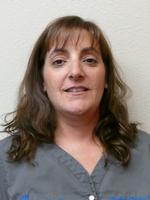Sports injuries rank among the top things that we see in our office. In most sports (running, baseball, football, etc) the feet are responsible for running and jumping and handling a lot of excessive force. There are two types of injuries that we see: overuse injuries and traumatic injuries. The most important thing to remember is to get treatment started as soon as possible or things could get worse. Never try to continue playing on an injured foot.
Common Overuse Sports Injuries of the Feet
Many people suffer from overuse injuries to the feet. These may be the result of not properly warming up or stretching after the workout is done. It may also be the fault of your footwear, especially for runners. One very common overuse problem is Achilles tendonitis. This is when the Achilles tendon becomes inflamed, which results in pain and discomfort. You can avoid Achilles tendonitis by increasing your intensity over time.
Heel pain is another overuse injury that can cause a lot of issues for you if not treated. The two most common causes of heel pain are plantar fasciitis and stress fractures. Plantar fasciitis occurs when the plantar fascia becomes inflamed, which usually happens after the foot has been carrying a lot of extra weight or stress. It can be treated with stretching and by wearing an orthotic. A stress fracture is different from other bone breaks because it’s a crack within the bone, which occurs over time. You may not even know you have a stress fracture until it becomes worse.
Traumatic Injuries
Traumatic injuries are the type where immediate first aid is required. Strains, sprains, and fractures are three very common injuries that may all feel the same at first. It’s important to protect your foot and seek immediate medical attention if you believe you have a sprain or a break. In the meantime it’s a good idea to follow the PRICE method of treatment. This stands for protect, rest, ice, compression, and elevation. All of these components together should decrease the chances of making anything worse until you can get yourself to a doctor for proper medical treatment. If you have injured yourself you need to stop your activity immediately and don’t assume that you can keep going or “push through the pain”.
Sever’s Disease
Sports injuries aren’t just for older athletes who have been at it for a long time. Sever’s disease is a condition that affects young athletes, particularly those that are going through a growth spurt. The growth plate in the heel may become inflamed from excessive pressure being put on it and this can result in extreme pain and discomfort.
The good news is that Sever’s won’t last forever and once the growth spurt is over the pain will also subside. The not so great news is that usually during this period it’s recommended that your child discontinue any physical activity that will aggravate the area. Fortunately, cross training is always an option and can be easier on the feet in the form of swimming or cycling.


